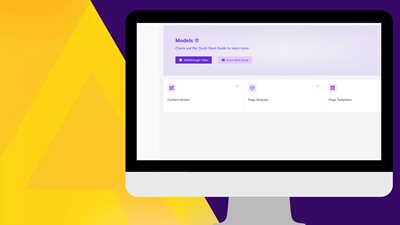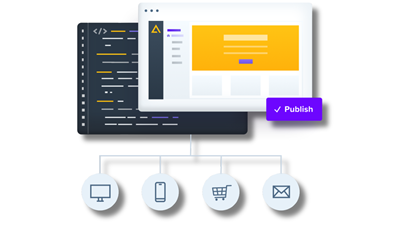Understanding Content Infrastructure


Content infrastructure is a term that has been gaining popularity in recent years, especially in the world of content management systems. But what exactly is content infrastructure? And why is it important for businesses to understand and implement it?
Traditionally, infrastructure refers to the organizational facilities, processes and structures we need to keep society operating. When we talk about software, infrastructure often refers to computing power, networking, and data processes.
In the realm of Content Architecture, infrastructure refers to the ability to define content data structures, save, approve, and publish content items in an orderly workflow, retrieve that content for usage in front-ends or other processes, and trigger other business processes based on changes to content.
Agility, as a content platform, provides the tools to implement these concepts in a practical and user-friendly way.
Here's how Agility enables you to build a content infrastructure that meets your unique needs:
Define Structure
Agility allows users to create models to represent the important content in their organization. These structures can be linked to form relationships between different kinds of content, such as categorizing or tagging content. These relationships can be 1-to-1, 1-to-many, and many-to-many, allowing for maximum flexibility and organization.
Implement Content Workflow
Controlling who has access to what content and administering the process for getting that content through the various stages (save, approve, publish, etc.) is crucial for any content management system. Agility makes it easy to implement user access and content workflow, ensuring that the right content is being worked on by the right people at the right time.
Retrieve Content
Content APIs are the beating heart of Agility, using either REST or GraphQL technologies. Users can pull their content directly into their front ends (websites and apps) and other orchestrations throughout their systems. This means businesses can leverage their content across all channels, ensuring consistency and efficiency.
Trigger Processes
Agility allows users to use webhooks to invoke other processes to react to content changes. These processes could be to push or sync that content to other systems or could be used to trigger DevOps pipelines. The endless integration possibilities here allow businesses to automate and streamline their workflows.
Content infrastructure is a crucial component of any content management system, allowing businesses to define content structures, implement content workflows, retrieve content, and trigger processes. Agility provides a user-friendly platform to enable businesses to implement these concepts and solve their unique business problems.

About the Author
Joel is CTO at Agility. His first job, though, is as a father to 2 amazing humans.
Joining Agility in 2005, he has over 20 years of experience in software development and product management. He embraced cloud technology as a groundbreaking concept over a decade ago, and he continues to help customers adopt new technology with hybrid frameworks and the Jamstack. He holds a degree from The University of Guelph in English and Computer Science. He's led Agility CMS to many awards and accolades during his tenure such as being named the Best Cloud CMS by CMS Critic, as a leader on G2.com for Headless CMS, and a leader in Customer Experience on Gartner Peer Insights.
As CTO, Joel oversees the Product team, as well as working closely with the Growth and Customer Success teams. When he's not kicking butt with Agility, Joel coaches high-school football and directs musical theatre. Learn more about Joel HERE.
View Related Resources

An Intro to Content Modeling

How Content Architecture Enables Content Maturity

